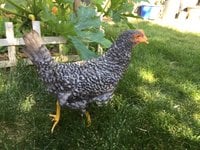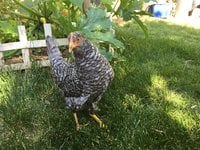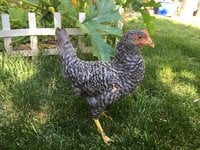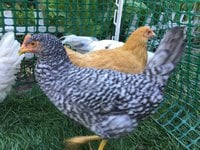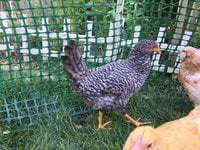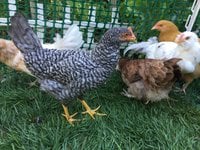I currently have 2 california greys, they were pretty flighty when they were younger but have matured the past few months.
Navigation
Install the app
How to install the app on iOS
Follow along with the video below to see how to install our site as a web app on your home screen.
Note: This feature may not be available in some browsers.
More options
You are using an out of date browser. It may not display this or other websites correctly.
You should upgrade or use an alternative browser.
You should upgrade or use an alternative browser.
-
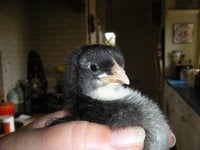 37f3e300_327001.jpeg81.2 KB · Views: 2,845
37f3e300_327001.jpeg81.2 KB · Views: 2,845 -
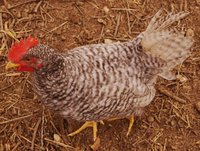 c08536f7_1048032_553072311416701_191693125_o.jpeg389.8 KB · Views: 2,862
c08536f7_1048032_553072311416701_191693125_o.jpeg389.8 KB · Views: 2,862 -
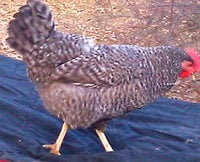 762e7aca_LL.jpeg30.7 KB · Views: 2,594
762e7aca_LL.jpeg30.7 KB · Views: 2,594 -
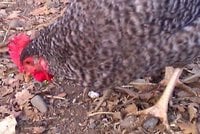 556ace81_LL-1.jpeg25.9 KB · Views: 2,268
556ace81_LL-1.jpeg25.9 KB · Views: 2,268 -
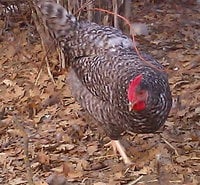 829aec5a_LL-2.jpeg43 KB · Views: 2,525
829aec5a_LL-2.jpeg43 KB · Views: 2,525 -
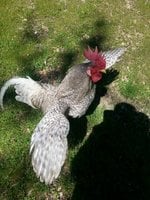 5e94cf2c_10155736_700087753381822_5907301289098348084_n.jpeg174.7 KB · Views: 2,467
5e94cf2c_10155736_700087753381822_5907301289098348084_n.jpeg174.7 KB · Views: 2,467
California Grey
- Added by tommysgirl
- Create date
- Updated
From the Privett website:
California Greys are a breed cross of Barred Plymouth Rocks and White...
- Silkies for life
- 4.00 star(s)
Pros: Smaller, quiet, good foragers
Cons: Somewhat broody, flighty
- willchickeneat
- 4.00 star(s)
Pros: Smaller, eats less feed.
I have 2 that are about 3 months. They are smaller than some easter eggers/welsummer that I grew out at the same time, so I ended up putting them with my 2 month juvie run. Even though they are smaller, they don't get bossed around when put with the adults. Just waiting a few more months when to see how soon they'll lay.
- Purchase Price
- $3-5/chick.
- Purchase Date
- March 2018
Attachments
- dheltzel
- 4.00 star(s)
Pros: Started laying at 5 months, lay nearly every day
Cons: More nervous and flighty than most breeds
The first pullet laid an egg at exactly 5 months of age and before they were 6 months old, I was getting 20 eggs from 24 pullets. None of my other breeds come close to that. I am using them to produce black sexlinks that lay blue eggs by putting an Ameraucana roo over them. I'm pretty sure this cross will be a great layer of blue eggs.
They are similar to leghorns in temperment, much more nervous than the Barred Hollands I used for the sexlink cross the previous year. Once they matured they were considerable calmer.
They are similar to leghorns in temperment, much more nervous than the Barred Hollands I used for the sexlink cross the previous year. Once they matured they were considerable calmer.
- Lady of McCamley
- 4.00 star(s)
Pros: Good layer of medium size eggs, good feed to egg ratio, smaller bird
Cons: A bit flighty, not overly friendly, mine lay a medium sized egg
Overall I am pleased with my 2 California Greys. This is the first opportunity I've had to assess the breed, though they've been on my wish list for a number of years, as they are harder to find even in my area, which is close to where the breed was originated. That original line is long lost, so I've been told, so what the hatcheries have today are a crossing of White Leghorn and Barred Rocks. This makes for a smaller bird that is a bit skittish but calmer than the Leghorn. It keeps the same feed ratio as the Leghorn and likewise lays very well if not quite as prolific as the WL. However mine continue to lay a medium size egg though slowly gaining in size their first laying year vs. the large to extra large of the WL or Brown Leghorn. I would get them again as I like having the nice stark white egg against the dark browns and greens of my other layers but would prefer a larger egg size. Hopefully that will come in their second season. The Cal Greys are calmer and less noisy than the Leghorns I've had, but definitely less inquisitive than Barreds, which actually I kind of prefer as my Barreds have been too curious to the point of annoyance. The Cal Greys keep to themselves, are a bit wary, yet still come to the shake of the treat bucket, though shy away from any hand contact. Most importantly they overall remain quiet. Good foragers as well and seem hawk savvy. Overall productive and useful for a white layer.
- dekel18042
- 5.00 star(s)
Pros: good egg to feed ratio,
Cons: excellent fliers, which might be a plus if you free range.
I wanted to add white eggs to my colored egg basket so was looking for some non flighty hens to get along in the dual purpose mostly heritage breed flock I have. So many of the white egg layers are described as "flighty" I read about and was interested in California Greys but they certainly are not the easiest breed to find so they went on the back burner and I almost got another.
Then this spring I was able to order several. Sizewise they're the smallest of our large fowl, being the same size or some are slightly smaller than our Easter eggers, our smallest breed. They're friendly and they forage well.
We have coops with covered runs but do let the chickens forage inside a fenced in area. The other chickens all stay within the fenced in area but the California Greys can easily fly the fence, but also come back in and can reach the high roofs on the coops.
They may not be practical for urban or suburban chicken fanciers unless kept in covered runs or their wings kept clipped, but they do stay nearby. If they go over the fence, they come back. They tend to leave our garden and flower beds alone (Don't know if this is a breed characteristic, but I appreciate it.)
And while friendly to us and they easily tolerate our dogs running around them, they are very aware of their surroundings (wary) so may be an excellent choice for someone who wants to free range.
Recently my husband announced that if we want more hens next year without hatching our own and we want sexed ones we should get more California greys. Considering the number of breeds we have and could choose from, this is quite a complement.
Added later: Now that our California Greys are laying, they are little egg machines. I want to say they've never skipped a day since they started. While other breeds take a break, the CG's just keep going.
I have noticed their egg shells are slightly thinner than my heritage breed egg shells (But still much better than store bought egg shells) and I did read that because they lay so many eggs this could happen so I do keep a bowl of calcium out in addition to their feed. already have an order in for some more for this spring.
They aren't the easiest breed to find, but if you can, they are well worth it.
Then this spring I was able to order several. Sizewise they're the smallest of our large fowl, being the same size or some are slightly smaller than our Easter eggers, our smallest breed. They're friendly and they forage well.
We have coops with covered runs but do let the chickens forage inside a fenced in area. The other chickens all stay within the fenced in area but the California Greys can easily fly the fence, but also come back in and can reach the high roofs on the coops.
They may not be practical for urban or suburban chicken fanciers unless kept in covered runs or their wings kept clipped, but they do stay nearby. If they go over the fence, they come back. They tend to leave our garden and flower beds alone (Don't know if this is a breed characteristic, but I appreciate it.)
And while friendly to us and they easily tolerate our dogs running around them, they are very aware of their surroundings (wary) so may be an excellent choice for someone who wants to free range.
Recently my husband announced that if we want more hens next year without hatching our own and we want sexed ones we should get more California greys. Considering the number of breeds we have and could choose from, this is quite a complement.
Added later: Now that our California Greys are laying, they are little egg machines. I want to say they've never skipped a day since they started. While other breeds take a break, the CG's just keep going.
I have noticed their egg shells are slightly thinner than my heritage breed egg shells (But still much better than store bought egg shells) and I did read that because they lay so many eggs this could happen so I do keep a bowl of calcium out in addition to their feed. already have an order in for some more for this spring.
They aren't the easiest breed to find, but if you can, they are well worth it.
- The Yakima Kid
- 5.00 star(s)
Pros: excellent breed
Professor James Dryden, NOT Horace Dryden, developed them; he began the groundwork at OAC, where his breeding program produced Lady McDuff, the first hen documented to lay 300 eggs in a year, and Oregona, who laid her thousandth egg at the beginning of her sixth year of lay. To this day the photographs of several of the outstanding birds bred by Professor Dryden are on display at Oregon State University.
Professor Dryden was probably the world's foremost breeder of poultry in the early 20th C.
Professor Dryden was probably the world's foremost breeder of poultry in the early 20th C.
- tommysgirl
- 5.00 star(s)
Pros: Mine are just chicks but they seem to have a social personality
Cons: They like to fly...get a lid on your brooder
I chose California Greys because they lay a white egg and I wanted to add white eggs to my basket. They also have a reputation as a less flighty breed than most other white egg layers and it is somewhat important to me to have a friendly flock. Of my current brood of chicks the CA Greys have distinguished themselves as the most curious and friendly in my mixed flock of babies. When the other chicks are crowding to the back of the brooder the CA Greys are rushing up to see what I am up to or flying out to sit on my lap or shoulder. They were just hatched on 5/24/13 so are not yet three weeks old as I type this. I am only keeping 1 or 2 but I find myself wishing I could keep more of them. They are also lovely to look at. Here is one next to a mutt that I hatched who is just three days younger. She will be barred but right now is several shades of silver and grey. I will update when they get older but I am excited about my CA Grey chicks.

The only reason I am not giving all 5 stars is that I have no idea how they will lay though they are supposed to be great layers. Also wanted to add that I got mine from Privett and for hatchery birds they were big healthy and robust.
ETA got my first egg this past weekend. Huge for a pullet egg. I don't have a scale but by the looks of it it would be large. Pullet who laid it was 20 weeks 4 days. These girls are smaller then BRs, less flighty then leghorns and if this egg is an indication we will get great production. I will update after she gets into a regular lay cycle.
ETA That first egg turned out to be a double yolker. She has not missed a day since. Every morning she has produced a lovely med/large white egg. She is still sweet still curious and hopefully by this time three days from now I will have a chick from her. A coop mate is sitting on eggs due to hatch in the next two days.
The only reason I am not giving all 5 stars is that I have no idea how they will lay though they are supposed to be great layers. Also wanted to add that I got mine from Privett and for hatchery birds they were big healthy and robust.
ETA got my first egg this past weekend. Huge for a pullet egg. I don't have a scale but by the looks of it it would be large. Pullet who laid it was 20 weeks 4 days. These girls are smaller then BRs, less flighty then leghorns and if this egg is an indication we will get great production. I will update after she gets into a regular lay cycle.
ETA That first egg turned out to be a double yolker. She has not missed a day since. Every morning she has produced a lovely med/large white egg. She is still sweet still curious and hopefully by this time three days from now I will have a chick from her. A coop mate is sitting on eggs due to hatch in the next two days.
- LillianMae
- 4.00 star(s)
Pros: Friendly, pretty, small, big personality
Cons: Slightly flighty when young, however they do get tamer as they get older
I really like these chickens, they're awesome!
- Michael Apple
- 4.00 star(s)
Pros: Curious, fast growing, friendly
Cons: Good flyers so a covered run is preferred unless one wants to clip wings.
I'll post more of what I witness as my chicks mature. So far I am pleased with the health and vitality of these chicks.

